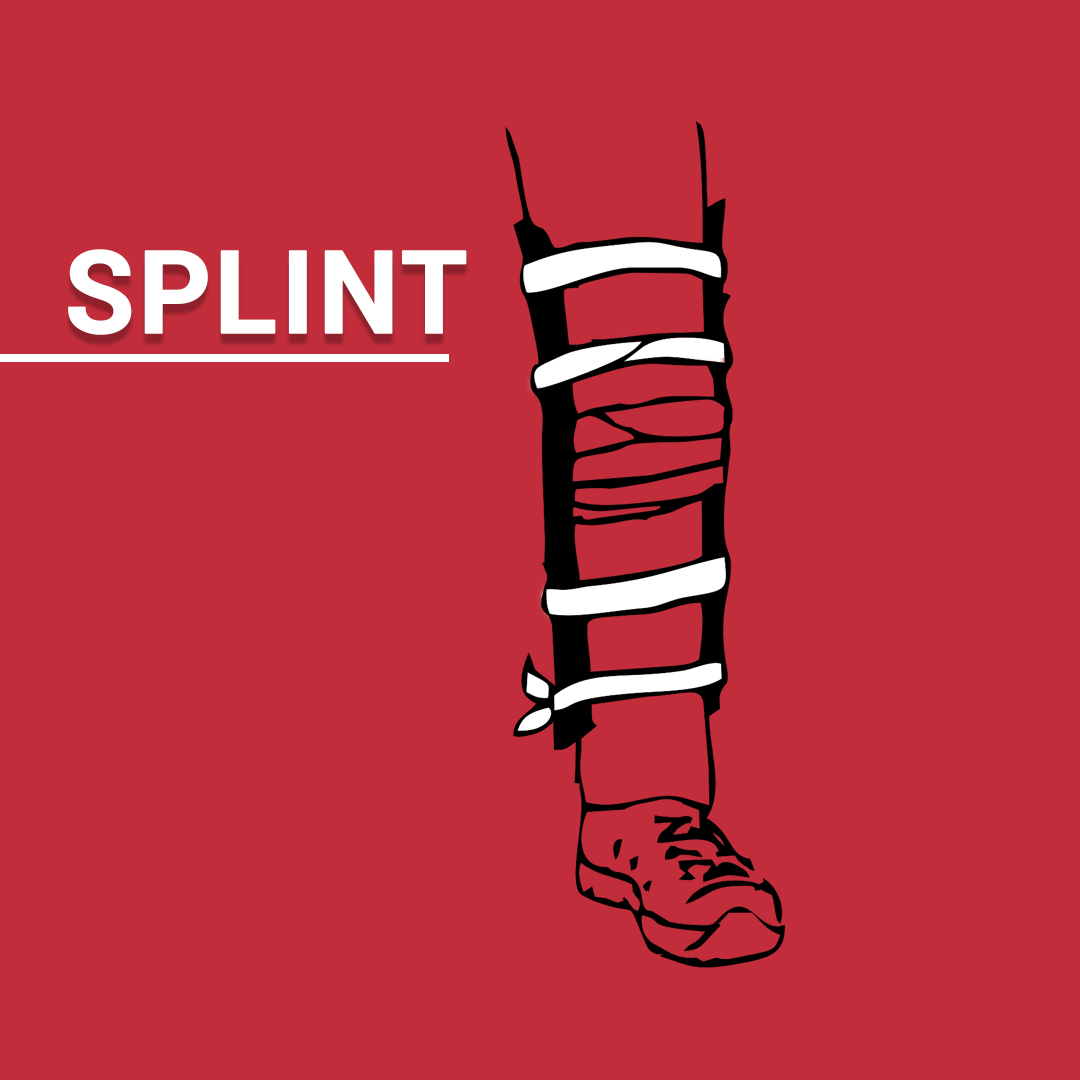At Grand Canyon: Prevention and First Aid Tips
Here is the full guide on how not to die at Grand Canyon, by Thomas M. Myers, MD (author of Over the Edge: Death in Grand Canyon). Get your own copy now — Click here.
First Aid
Shock
SIGNS AND SYMPTOMS:
Lightheadedness/dizziness; clammy, pale, or gray skin; rapid, shallow breathing; rapid, weak pulse; anxiety; drowsiness to a gradual loss of consciousness.
DO THIS:

1. Calm the victim.
2. Place in shock position (flat on the back, legs elevated 8 to 12 inches) unless there is uncontrolled bleeding or a possible head or spinal injury, or if it causes more distress or breathing difficulty. Cover with a blanket.
3. Assess and treat the underlying cause.
4. Give clear fluids if the victim is able to swallow and appears dehydrated, but do not give food.
5. Evacuate to a local hospital.
Heat Illness (Dehydration/Heat Exhaustion/Heat Stroke)
Watch out! Early on, this problem can appear similar to water intoxication. Typically takes several hours to develop. Words in bold represent differences between the two.
SIGNS AND SYMPTOMS:
Mild: Headache, fatigue, nausea, vomiting/dry heaves, weakness, thirst, irritability, decreased urination.
Moderate: Lightheadedness/dizziness, worse with standing; warm to hot clammy skin; rapid, weak pulse; anxiety.
Severe (Heatstroke): Hot sweaty/dry skin; rapid, shallow respiration; rapid, weak pulse; confusion; unresponsive, abnormal body posturing (stiffening, arching, seizures).
DO THIS:
Ask about total fluid intake before giving fluids. If it sounds low for the conditions (e.g., < ¼ to 1/3 liter or 1 to 1 ½ cups per hour over several hours for an average-size adult hiking in hot weather), and signs and symptoms support it, treat as dehydration/heat illness. If in doubt, do not give fluids until the condition can be more accurately assessed.
Mild to Moderate:
1. Encourage the victim to stop and rest immediately (in shade during hot weather).
2. Douse head and skin with water to cool down and decrease sweat loss.
3. Provide fluids as tolerated; do not force.* Wait for 15 to 20 minutes if vomiting.
4. If the victim displays signs of shock, place in shock position.
5. Evacuate if condition worsens.
*Consider water intoxication before giving fluids!
Severe (Heatstroke):
1. Begin immediate cooling. Submerge body in cold water (creek or Colorado River) if possible, while protecting head and airway.
2. Do not give fluids.
3. Arrange immediate evacuation.
4. Start CPR if needed.
Water Intoxication (Hyponatremia)
Watch out! Early on, this problem can appear similar to heat illness. Words in bold represent differences between the two.
SIGNS AND SYMPTOMS:
Early: Headache, fatigue, nausea, vomiting fluid (initially), bloated feeling, weakness, no thirst, irritability, excessive urination.
Moderate: Lightheadedness/dizziness, worsening headache (may feel worse lying flat), clammy skin, normal to rapid pulse, anxiety, confusion, trouble speaking, blank stare, paradoxical decrease in or absence of urination.
Severe: Grand mal seizures, erratic breathing, unresponsive.
DO THIS:
Ask about total fluid intake before giving fluids. If it sounds high (e.g., > ¾ to 1 liter or 3 to 4 cups per hour over several hours for an average-size adult) and signs and symptoms support it, treat as hyponatremia.
Early to Moderate:
1. Encourage the victim to stop drinking and rest immediately in shade.
2. Douse skin with cool water to stop further salt loss via sweat.
3. Do not give victim fluids. Provide salty snacks and restrict fluids until symptoms improve and urination is normal (this may take several hours).
4. Evacuate if conditions worsen.
Severe:
1. Start immediate cooling if heat illness is suspected.
2. Do not give fluids.
3. Arrange immediate evacuation.
4. Start CPR if needed.
Broken Bones, Dislocations, Sprains/Strains
SIGNS AND SYMPTOMS:
Usually related to direct blow, fall, or twist. All: Sudden, sharp pain; pain with movement and/or swelling; bruising; numbness; tingling (often but not always). Broken Bones: Audible snap or crack, deformity, crunching or crackling sounds and point tenderness over the bone (associated wound or break in skin indicates open, or compound, fracture). Dislocations: Deformity, pop or clunk in joint. Sprains/Strains: Pop or clunk in joint, localized muscle or tendon pain/tenderness.
DO THIS:

2. Clean and apply the dressing to any visible wound (see Wound Care).
3. Pad area around the injury (use soft material).
4. Splint significant injuries in the position you find them (do not attempt to straighten an angles injury): place rigid support on both sides, immobilizing the joints above and below (improvise with materials at hand); adjust for comfort.
5. Secure splint with gauze, cloth, belt, or laces.
6. Elevate and apply cold pack/ice if available, 20 minutes per hour.
7. Arrange immediate evacuation.
Wounds
SIGNS AND SYMPTOMS:
Visible bleeding, tearing, gaping, or loss of skin. Subcutaneous fat or other tissues may be visible.
DO THIS:
1. To protect yourself from blood-borne infection, wear gloves (if none are available, improvise with plastic bags).
2. Expose wound to evaluate the severity of the injury.
3. Control bleeding. Using a sterile gauze pad, apply direct pressure on the wound for 5 to 10 minutes.
4. Once bleeding is controlled, gently clean around wound with an antibacterial agent if available (e.g., povidone-iodine, soap); do not get disinfectant in the wound.
5. Irrigate with the cleanest water available (do not irrigate puncture wounds).
6. Apply topical antibiotic and sterile/clean dressing (if available) and keep dressing clean and dry.
7. For minor wounds, cleanse and replace dressing daily.
8. Evacuate if the wound is large, gaping, or highly contaminated; a deep puncture; potentially disfiguring; involves joints or possibly internal organs; or if it becomes infected (e.g., warm, red, swollen, pus begins to drain, the victim develops fever).
Near Drowning/Cold-Water Immersion
SIGNS AND SYMPTOMS:
Difficulty breathing, coughing, dizziness, altered level of consciousness, nausea and vomiting, pale skin, shivering.
DO THIS:
1. Pull victim from the water (do not enter the Colorado River without a life jacket and lifeline to on-shore support).
2. Remove cold, wet clothing to avoid hypothermia.
3. Wrap in warm sleeping bag or blanket.
4. If the victim displays signs of shock, place in shock position.
5. Give clear, warm fluids if the victim is able to swallow, but do not give food.
6. Evacuate if the victim has trouble breathing, shortness of breath, or goes into shock.
7. If required, CPR can be initiated up to 60 minutes after the incident and should continue until the victim has been warmed.
Heart Attack
SIGNS AND SYMPTOMS:
Chest pain (squeezing, pressure, heaviness); shortness of breath; nausea and vomiting; pale, gray skin and/or sweating; anxiety; dizziness.
DO THIS:
1. The victim should stop and rest immediately (in shade during hot weather).
2. Place the victim in a sitting, partially inclined position or position of best comfort.
3. Help the victim remains calm.
4. Give one full aspirin (325 mg) or 4 low-dose/baby aspirin (81 mg each) if available; have victim chew and swallow.
5. Monitor airway and breathing (start chest compression if the victim becomes unresponsive and you can’t find a pulse).
6. Allow victim to sit up if tolerated and if it helps to breathe.
7. Place in shock position if signs of shock.
8. Evacuate immediately.
Rattlesnake Bites*
SIGNS AND SYMPTOMS:
Fang (bite) marks; immediate burning and stinging; immediate swelling; oozing of fluid, non-clotting blood; bruising at site, migrating up extremity. Severe symptoms may include shortness of breath; nausea and vomiting; pale, gray, and/or sweating skin; anxiety, dizziness.
DO THIS:
1. Retreating slowly, move victim away from the snake. (Do not attempt to kill the snake! Even decapitated heads can reflex-bite for 20-60 minutes after death, causing further envenomation.)
2. Place the victim in a sitting, partially inclined position or position of best comfort.
3. Calm the victim.
4. Cleanse the area around the bite wound thoroughly with soap and water. Do not cut or apply suction devices to the bite or place constriction bands above the bite.
5. If the victim is wearing jewelry on the affected extremity, remove before swelling sets in.
6. Splint bitten extremity to limit use, and periodically measure girth to help gauge severity and how rapid envenomation is spreading.
7. Position affected extremity level with the heart.
8. Evacuate immediately for possible antivenom therapy. Tissue damage can be permanent and may be minimized with treatment. Time is an issue! If you are the victim and are alone, attempt to hike out or go for help.
*25 percent of bites are “dry” (no venom injected).
Scorpion Stings
SIGNS AND SYMPTOMS:
Tingling, throbbing, nerve pain extending from sting site (tapping on sting site sends shock wave of pain up nerve), anxiety, apprehension. An infant or small child may have roving eyes or trouble breathing, be restless, or drool.
DO THIS:
1. Calm the victim.
2. Treat pain with an age-appropriate dose of acetaminophen (Tylenol) or ibuprofen (Advil, Motrin).
3. A cold compress may help.
4. Limit activity pending improvement (usually 1 to 2 days).
5. Evacuate if the victim is an infant or small child with severe symptoms.
Getting Help
Important: Provide the following information to Emergency Medical Services personnel: victim’s location, the nature of the medical problem, and condition (stable or unstable).
Corridor Ranger Stations
Ranger stations and medical clinics are staffed year-round at Indian Garden and Phantom Ranch. Cottonwood and Manzanita Ranger Stations are staffed seasonally.
Emergency Phone Locations (auto-connect to 911).
• Bright Angel Trail: Trail Head, Mile-and-a-Half Resthouse, Three-Mile Resthouse, Pipe Creek River Resthouse and Bright Angel Campground
• South Kaibab Trail: Trail Head and The Tipoff
• North Kaibab Trail: Cottonwood and Manzanita Ranger Stations
Emergency Phone Numbers: 911 or (928) 638-7911
• Cell Phone: Coverage is sporadic and limited to corridor areas near South Rim on Bright Angel Trail.
• Satellite Phone: Coverage is usually obtainable. Be ready to give information quickly.
Emergency Evacuation
• Go to or send for help if you are close to the rim, river, or a ranger station; you have inadequate food, water, or shelter; you have to way to signal.
• Wait for help to come to you if the rim, river, or ranger station is too far away; food, water, and shelter are adequate; you have means to send a distress signal (signal mirror or ground-to-air radio). Note: Smoky fires are not recommended because they go unnoticed.
Thomas M. Myers, MD — A physician at Grand Canyon Clinic since 1990, Tom has treated thousands of canyon visitors and residents. He has devoted much of his medical career to understanding, treating, and preventing medical problems for those who explore the region and is the co-author of the award-winning book, Over the Edge: Death in Grand Canyon.
© 2020 Grand Canyon Conservancy
Text © 2020 Thomas M. Myers
ALL RIGHT RESERVED.
Printed in the United States of America
Editing: Susan Tasaki Design: David Jenney Design
Photos: Bronze Black, Adam Schallau (cover composite); Randy Prentice (heat illness); Kerrick James (drowning); all other NPS.
Safety is an important concern in all outdoor activities, and users of this pocket guide are fully responsible for their own well-being. This guide is intended to provide general information and guidance with regard to the treatment of injury or illness when professional medical attention is not readily available. The author and publisher disclaim and are in no way responsible or liable for any loss, damage, or disruption caused by the use or misuse of the information contained herein.

Post Office Box 399,
Grand Canyon, AZ 86023
grandcanyon.org



Leave a Reply
Want to join the discussion?Feel free to contribute!